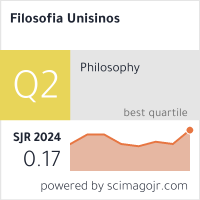The colored-brain thesis
DOI:
https://doi.org/10.4013/fsu.2021.221.10Abstract
The “colored-brain thesis”, or strong qualitative physicalism, is discussed from historical and philosophical perspectives. This thesis was proposed by Thomas Case (1888), in a non-materialistic context, and is close to views explored by H. H. Price (1932) and E. Boring (1933). Using Mary’s room thought experiment, one can argue that physicalism implies qualitative physicalism. Qualitative physicalism involves three basic statements: (i) perceptual internalism, and realism of qualia; (ii) ontic physicalism, charaterized as a description in space, time, and scale; and (iii) mind-brain identity thesis. In addition, (iv) structuralism in physics, and distinguishing the present version from that suggested by H. Feigl and S. Pepper, (v) realism of the physical description. The “neurosurgeon argument” is presented, as to why the greenness of a visually perceived avocado, which (according to this view) is present in the brain as a physical-chemical attribute, would not be seen as green by a neurosurgeon who opens the observer’s skull. This conception is compared with two close views, Russellian (and Schlickian) monisms and panprotopsychism (including panqualityism). According to the strong qualitative physicalism presented here, the phenomenal experience of a quale q is identical to a physico-chemical quality q, which arises from a combination of (1) the materiality wassociated with the brain, and (2) the causal organization or structure of the relevant elements of the brain S, including in this organization the structure of the self: (Sw)q. The “explanatory gap” between mental and physical states is shifted to a gap between the physico-chemical qualities q and the organized materiality of a specific brain region (Sw)q, and is seen as being bridged only by a set of non-explanatory postulates.
Keywords: Colored-brain thesis, qualitative physicalism, mind-brain identity thesis, qualia, panprotopsychism, sensorium.
Downloads
Metrics
Downloads
Published
How to Cite
Issue
Section
License
I grant the Filosofia Unisinos – Unisinos Journal of Philosophy the first publication of my article, licensed under Creative Commons Attribution license 4.0 (which allows sharing of work, recognition of authorship and initial publication in this journal).
I confirm that my article is not being submitted to another publication and has not been published in its entirely on another journal. I take full responsibility for its originality and I will also claim responsibility for charges from claims by third parties concerning the authorship of the article.











